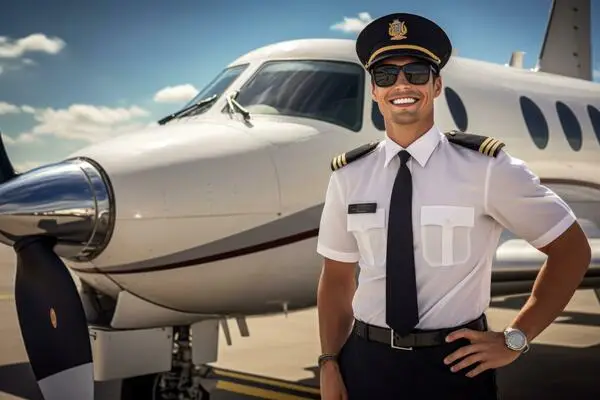
Dreaming of soaring through the clouds as an airline pilot? Embarking on a career in aviation demands dedication, hard work, and a love for the skies. One of the most common questions from aspiring pilots is: How long does it take to become an airline pilot? In this comprehensive article, we will explore the journey of becoming an airline pilot, including the timeline, training requirements, and differences between Europe and the United States. So, fasten your seatbelts and let’s take off on this informative journey.
Establishing an Educational Foundation and Meeting Prerequisites:
To become an airline pilot, the first step is laying a solid educational foundation. Typically, this involves obtaining a high school diploma or its equivalent. While not obligatory everywhere, having a college degree is increasingly advantageous, often becoming a requirement for certain airlines, especially major carriers.
Flight Training and Licensing Procedures:
The subsequent phase involves flight training, a process that varies depending on the country and aviation regulations. Let’s delve into the disparities between Europe and the United States concerning flight training and licensing:
Europe:
Initiating with a Private Pilot License (PPL) allows individuals to fly for leisure and gain flight experience. After obtaining the PPL, aspiring pilots work towards getting a Commercial Pilot License (CPL), enabling them to fly for compensation. Achieving the CPL involves completing a set number of flight hours, theoretical exams, and passing skill tests.
In addition to the CPL, European pilots must acquire an Instrument Rating (IR), allowing them to fly under instrument flight rules (IFR) in adverse weather conditions. After accumulating sufficient flight experience and meeting specific requirements, pilots can pursue an Airline Transport Pilot License (ATPL), the highest level of certification authorizing them to serve as captains or first officers in commercial airlines.
United States:
Aspiring pilots in the United States start by obtaining a Private Pilot Certificate, followed by an Instrument Rating (IR) and a Commercial Pilot Certificate. The training prerequisites for each certificate involve a combination of flight hours, theoretical knowledge exams, and practical tests.
Similarly to Europe, pilots in the United States can aspire to obtain the Airline Transport Pilot Certificate (ATP) after accruing a specified number of flight hours and meeting necessary qualifications. The ATP represents the highest level of certification in the U.S., enabling pilots to serve as captains or first officers in commercial airline operations.
Accumulating Flight Hours and Experience:
Accumulating flight hours is a pivotal aspect of the journey towards becoming an airline pilot. While the exact number of flight hours required varies, aspiring pilots typically need a minimum of 1,500 flight hours to qualify for either an Airline Transport Pilot License (ATPL) or an Airline Transport Pilot Certificate (ATP). These flight hours encompass time spent in various types of aircraft, such as single-engine and multi-engine airplanes.
It is crucial to note that the path to accumulating 1,500 flight hours may vary based on factors such as individual capabilities, financial resources, and training opportunities. Some pilots accrue flight hours by serving as flight instructors, charter pilots, or in other aviation-related roles. Others opt for advanced training programs or join regional airlines that offer opportunities for gaining flight experience.
Regional Disparities: Europe vs. United States:
Significant disparities exist between Europe and the United States regarding the pathway to becoming an airline pilot. Here are some key differentiators:
In Conclusion:
Embarking on the journey to become an airline pilot is an exhilarating pursuit that demands commitment, perseverance, and a fervent passion for aviation. The duration of this journey may vary depending on individual circumstances, training opportunities, and regional disparities in regulations. Whether you set forth on this path in Europe or the United States, the experience of soaring high in the skies and commanding an aircraft renders the journey immensely rewarding. So, fasten your seatbelt and prepare for a thrilling career that will propel you to new heights as an airline pilot.